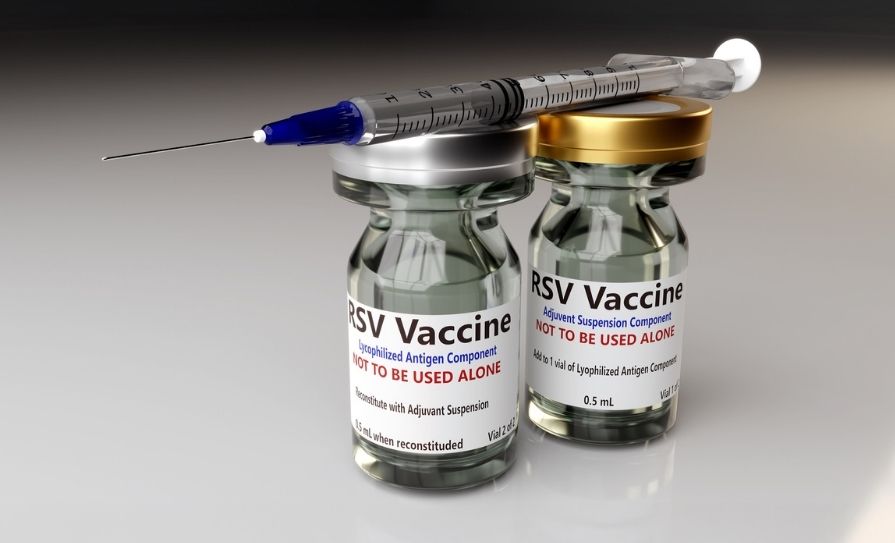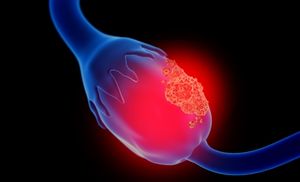An overview of the alcohol crisis in Ireland and the latest approaches to managing alcohol-related cirrhosis
Alcohol is synonymous with Irish culture; this is compounded by the fact that there’s an Irish pub in every corner of the globe, our number-one tourist attraction is a brewery, and Irish history is rich with characters infamous for their love of a drink, from Shane McGowan to Oscar Wilde. What is sobering, however, are the implications of our actions. Alcohol is the cause of a major public health emergency in Ireland. Here we present a background to the alcohol crisis and offer guidance on care of alcohol-related morbidity in the Irish healthcare system, with reference to recent European Association for the Study of the Liver (EASL) guidelines on the subject.
Tackling the problem
The key to managing alcohol-related presentations is prevention, but also identifying what is harmful, knowing how and when to intervene, and applying evidence-based approaches to care.
Define it
The quantification of alcohol consumption is notoriously difficult. There is large variation in the definition of a ‘drink’. Quantification in grams of alcohol per day or week is most precise, however single servings or a ‘drink’ of various alcoholic beverages vary from 8g to 16g of alcohol. EASL suggests standardising the measure of a drink to 10g to simplify comparisons between studies, as has been used by the World Health Organisation (WHO). According to ICD-10, harmful drinking is considered when alcohol use is causing damage to health that may be either physical or mental. ‘Heavy episodic drinking’ has been defined as consumption of more than 60g of pure alcohol on one occasion. ‘Binge-drinking’ is the consumption of four or more drinks for women and five or more drinks for men within a two-hour period.
The creation of the concept of alcohol use disorder (AUD) in the DSM-V has helped to overcome the arbitrary differentiation between alcohol abuse and alcohol dependence. The application of the term ‘alcoholic’ is not clinically useful and leads to stigmatisation of patients. ‘Alcoholic liver disease’ is now termed ‘alcohol-related liver disease’ (ALD), for instance. The DSM-V defines AUD as “a problematic pattern of alcohol use leading to clinically and significant impairment or distress”, with graded levels of severity, depending on the number of diagnostic criteria being met. There are 11 diagnostic criteria, and a patient who meets at least two of them in the last year qualifies for a diagnosis of AUD. Drinking habits of patients must be assessed regularly, using tools with proven reliability.
Many patients may be unaware that they are drinking alcohol to excess or an unsafe volume. But is there a ‘safe’ volume of alcohol that can be consumed without consequence? The relationship between alcohol use and overall mortality is represented by a J-shaped curve. Light consumption appears to have a lower risk of coronary artery disease, while moderate-to-heavy consumption is strongly linked to increased risk of cardiomyopathy, hypertension, atrial arrhythmias and haemorrhagic stroke. Further, alcohol is a carcinogen implicated in the development of several cancers, with this risk beginning at levels as low as one unit/10g per day, highlighting that there is really no safe limit, just ‘lower risk’.
The link between alcohol and development of liver cirrhosis is also well established. But, again, is there a threshold of consumption at which the risk emerges, and is there a continuous dose-response relationship? A 2010 meta-analysis found that there is an increased risk of mortality from liver cirrhosis among men and women drinking 12-to-24g of alcohol per day. Among women in particular, there was a significant increase in mortality in those drinking up to 12g/day, suggesting that if a threshold exists, it is very low. EASL recommends limiting alcohol intake to no more than two drinks for females and three drinks for males per day (each drink containing 10g of alcohol), as this amount was not associated with a significant increase in risk of liver disease morbidity. Importantly, should a patient have established cirrhosis, it is imperative that they achieve and maintain absolute abstinence from alcohol, to prevent disease progression and development of complications from cirrhosis.
What are we drinking?
The short answer is too much, too often. Health Research Board (HRB) data from 2013 revealed that 2.48 million people in Ireland drink alcohol. Of these, 1.34 million (or 54 per cent) drink harmfully, with 176,999 people in Ireland being alcohol-dependent. Per capita, alcohol consumption was 11 litres of pure alcohol per person aged 15+ in 2018, which equates to 445 pints of beer per person per year. When these figures are corrected to exclude the 20.6 per cent of Irish people who don’t drink alcohol, the figures report a staggering 498 pints of beer per person per year. The majority, 75 per cent, of this drinking is done as part of a binge-drinking episode. The study found that we consistently underestimate what we drink. What is even more alarming is the rate at which our consumption has increased over the years, almost trebling between 1960 and 2001.
Alcohol-related harm
It comes as no surprise then that alcohol has major public health implications in Ireland. It is responsible for more than 200 different disease and injury conditions, such as liver cirrhosis, heart disease, and cancer. According to the WHO, harmful use of alcohol is a causal factor in 3.3 million deaths annually worldwide. In Ireland, it is responsible for three deaths per day, 88 deaths per month, and over 1,000 deaths per year. There is a distinct gender imbalance, with 7.6 per cent of deaths among males and 4.0 per cent of deaths among females attributable to alcohol. It is responsible for one-in-four deaths of young men aged 15-to-39 in Ireland. Alcohol is a factor in half of all suicides in Ireland and over a third of cases of deliberate self-harm.
Liver disease rates in Ireland are increasing rapidly. The greatest level of increase is among 15-to-34 year-olds, who historically had the lowest rates of liver disease. While mortality rates from ischaemic heart disease, cerebrovascular disease, neoplasms, and respiratory disease have seen a steady decline over the last 40 years, mortality from liver disease has increased 400 per cent in this time frame. This is a staggering statistic of the magnitude of the burden of liver disease, with alcohol contributing more to the total burden of liver disease than all other causes combined. Alcohol is also linked to an increased risk of malignancy, with 900 people in Ireland being diagnosed with alcohol-related cancers per year, with an estimated 500 deaths attributed to these diseases annually.
Given the dramatic rise in alcohol sales (58 per cent higher for the same period in 2019) during the current Covid-19 pandemic, it is not surprising that a significant rise in hospital presentations related to alcohol is currently being seen. This ‘Covid-19 hangover’ is likely to represent only the tip of the iceberg as regards to the harm caused by excessive alcohol consumption on mental and physical health, as well as close contacts, which will linger long after the crisis abates.
Screening tools
There are many tools that have been validated and used internationally, but the AUDIT (Alcohol Use Disorders Inventory Test) remains the ‘gold standard’. Since development in 1982, it has proven to have reliable sensitivity and specificity in clinical settings worldwide. The AUDIT has 10 questions that assess consumption (1-3), dependence (4-6) and alcohol-related problems (7-10). Shorter versions such as the AUDIT-C are available, which include only the first three questions of the AUDIT and is reliable for screening of ‘risky drinking’. Some bodies recommend the use of a single screening question: ‘How often do you have six or more drinks on one occasion?’ In the presence of a positively-rated answer, this question is then followed by the whole AUDIT.
Screening for comorbid conditions
Patients with AUD have a high prevalence of psychiatric comorbidity, particularly anxiety and affective disorders, which may be present independently or concurrent with alcohol dependence. Alcohol excess can affect every organ, with severe manifestations such as cirrhosis, cerebellar disease, chronic pancreatitis, cardiomyopathy and malnutrition. Patients with AUD are at a higher risk of developing other addictions, including nicotine. As cigarette smoking and alcohol abuse are synergistic in causing cardiovascular diseases and cancer, including hepatocellular carcinoma (HCC), healthcare providers are encouraged to promote and assist in smoking cessation in patients with ALD. The management of a patient with AUD should have a multidisciplinary approach, involving psychiatrists, psychologists and social workers, as appropriate.
Seek and treat for ALD
One should consider a diagnosis of ALD in patients who regularly consume >20g of alcohol per day in females and >30g/d in males, together with the presence of clinical and/or biological abnormalities suggestive of liver injury. A high proportion of patients with histological features of ALD do not experience symptoms or show any laboratory abnormalities. Therefore, a patient identified as consuming a critical amount of alcohol should undergo appropriate screening investigations. In addition, ALD should be considered in patients presenting with extrahepatic manifestations of AUD, such as symmetric peripheral neuropathy, pancreatitis, cardiomyopathy, etc.
As liver fibrosis can present with normal liver function tests (LFTs), screening investigations should include serum albumin, prothrombin time (PT), international normalised ratio (INR), serum bilirubin levels, as well as platelet and white blood cell counts, which should be measured to evaluate liver synthetic function and look for evidence of portal hypertension. An ultrasound should follow upon detection of any abnormalities to assess for structural abnormalities, including HCC. A test to detect liver fibrosis can be very useful to accurately stage liver disease non-invasively and to exclude cirrhosis (ie, transient elastography, Fibroscan).
The presence of coexisting aetiologies of liver injury should be screened for using an extended laboratory work-up, including hepatitis B and C virus (HBV and HCV) serology, liver autoantibodies, immunoglobulins, ferritin and transferrin saturation, alpha-1-antitrypsin and ceruloplasmin, as appropriate. Whenever there is evidence of cirrhosis, upper gastrointestinal endoscopy should be conducted to screen for gastro-oesophageal varices, unless there is a low risk of having significant varices requiring treatment based on the Baveno criteria (platelets >150,000mm3) and Fibroscan <20kPa, in which case an OGD can be deferred.
General management principles
Once alcohol-related liver disease is diagnosed, the transition from active drinking to abstinence should be supported and care plans individualised to cater for the patient’s specific requirements. Given the risk of Wernicke’s encephalopathy, supplementation with B-complex vitamins is recommended (thiamine, Pabrinex). Other general approaches include treatment of hepatic encephalopathy (lactulose, rifaximin) and treatment of ascites (salt restriction, diuretics). The avoidance of hepatotoxic and nephrotoxic medication, as well as sedatives, is crucial.
There are many nuances to management that are beyond the scope of this article, but general principles are as follows:
Managing the withdrawal state
Alcohol withdrawal syndrome (AWS) can be a life-threatening condition affecting alcohol-dependent patients who suddenly discontinue or decrease alcohol consumption. Moderate AWS usually develops within six-to-24 hours after the last alcoholic drink, with peak risk of complications generally after one-to-three days. Symptoms and signs can include: Tachycardia, tremors, irritability, perspiration, hypertension, anxiety, nausea, and vomiting. This can often progress to more severe forms of AWS, characterised by delirium tremens, seizures, coma, cardiac arrest, and death. Severity scores for AWS are recommended and help to guide management of these patients, such as the Clinical Institute Withdrawal Assessment for Alcohol (CIWA-Ar). A CIWA-Ar score >8 indicates a moderate AWS and a score ≥15 indicates severe AWS. Pharmacological treatment is recommended for both moderate and severe AWS using a symptom-triggered regimen as opposed to a fixed-dose schedule in order to prevent the accumulation of the drug. Using the CIWA scoring system allows a symptom-based approach to treating withdrawals in the safest manner, and avoids over- or under-treatment. Benzodiazepines are considered the ‘gold standard’ treatment for AWS, given their efficacy for reducing both withdrawal symptoms and the risk of seizures and/or delirium tremens. Long-acting benzodiazepines (ie, diazepam, chlordiazepoxide) provide more protection against seizures and delirium, but short- and intermediate-acting benzodiazepines (ie, lorazepam) are safer in elderly patients and those with cirrhosis. Benzodiazepine use should not be extended past the acute phase due to the risk of dependence and abuse.
Early evaluation of severity and prediction of outcome
Various prognostic models have been developed to identify patients at high risk of early death using baseline and serial data. Maddrey’s discriminant function (DF) was the first score that reliably defined individuals at the highest risk of death in the short-term, and remains the most widely used in clinical practice and clinical trials. The modified version uses a cut-off value of 32 to identify patients with severe alcoholic hepatitis (AH) and also the threshold used for initiating corticosteroid therapy. Other validated prognostic scores, such as the model for end-stage liver disease (MELD) and the Glasgow alcoholic hepatitis score (GAHS), are useful. Patients with a MELD score above 20 are at a high risk of 90-day mortality. GAHS was derived from five variables independently associated with outcome (age, serum bilirubin, blood urea, prothrombin time, and peripheral blood white cell count) and identifies patients at greatest risk of death in the absence of treatment. The GAHS ranges from five-to-12 and patients with an mDF ≥32 and a GAHS ≥nine have a poor prognosis and an 84-day survival benefit when treated with a corticosteroid. The different scoring systems often incorporate the same variables and appear to have similar efficacy in predicting short-term survival.
Early improvements in liver function have been seen to have a major impact on short-term mortality. The Lille model, which is based on pre-treatment data plus the response of serum levels of bilirubin to a seven-day course of corticosteroid therapy, was developed as a tool to assess response to therapy. This score ranges from 0 to 1; a score of ≥0.45 indicates non-response to corticosteroids. Corticosteroids should be discontinued in null responders at day seven of therapy. The combination of MELD and the Lille model has been suggested as an effective predictive algorithm of short-term mortality.
Corticosteroid use
The use of corticosteroids to treat AH has been controversial, owing to the conflicting findings of individual studies and meta-analyses. A large, multi-centre, randomised trial (STOPAH) was conducted in the UK from 2011-2014, in patients with a clinical diagnosis of severe AH. This study reported a borderline reduction in mortality at 28 days for patients treated with prednisolone 40mg/day compared with control patients. Importantly, prednisolone therapy provided no benefit to patients after one month, findings that were subsequently confirmed in a network meta-analysis. The applicability of corticosteroid therapy is limited by concerns about heightened risks of sepsis and gastrointestinal bleeding. Therefore, early identification of non-responders to corticosteroids is important to define stopping rules and limit unnecessary exposure. Practically, prednisolone at a dose of 30-to-40mg per day is prescribed for 28 days, with efficacy assessed at five-to-seven days. In cases of poor response as indicated by the Lille score, corticosteroids can be discontinued. At the end of the course of treatment, prednisolone is usually gradually tapered over a period of three weeks.
Infection: Seek and treat
Infection is a common and severe complication in patients with severe AH, and is one of the major causes of death. High incidence of infections may be explained by underlying cirrhosis, due to cirrhosis-related defects in the immune system. The use of steroids has been proposed to increase the risk of development of infection, however, a recent meta-analysis has shown that patients treated with corticosteroids had no increased risk of infection or higher mortality from infection than those treated with placebo. However, as seen in the STOPAH trial, serious infections were more frequent in patients treated with prednisolone. Bacterial infections represent the vast majority (approximately 90 per cent) of infectious episodes in the setting of severe AH. Therefore, a careful screening for infection is recommended before initiating therapy, repeatedly during corticosteroid treatment, and during the follow-up period.
Invasive aspergillosis (IA) has been noted to complicate severe AH. The diagnosis of IA and the distinction with colonisation in these patients is challenging. Serum galactomannan may be a good screening test for IA (cut-off ≥0.5, sensitivity of 89 per cent and specificity of 84 per cent). Despite adequate antifungal treatment, IA is associated with poor outcomes. Sporadic cases of pneumocystis pneumonia (PCP) have been described in patients with severe AH and concomitant corticosteroid treatment, with a very high mortality rate. In view of the poor prognosis of IA and PCP, despite adequate therapies in patients with severe AH treated with corticosteroids, aggressive screening strategies are recommended by EASL.
Nutrition: Assessment and management
Malnutrition is commonly associated with cirrhosis, with protein energy malnutrition being present in almost every patient with severe AH, which is associated with poor prognosis. The European Society for Clinical Nutrition and Metabolism (ESPEN) recommends a daily energy intake of 35-to-40kcal/kg of body weight (BW) and a daily protein intake of 1.2-to-1.5g/kg of BW in patients with AH. However, these objectives can be difficult to achieve in clinical practice. Therefore, the use of nasogastric feeding is recommended by EASL if patients are unable to maintain adequate oral intake to meet these targets. The importance of adequate nutrition is exemplified by studies which demonstrated that patients with a daily calorie intake of less than 21.5kcal/kg of BW had a significantly higher risk of one- and six-month mortality and infections. Parenteral nutrition is associated with a high risk of line sepsis and is not recommended for routine use. A low-salt diet is mandatory to prevent the worsening of ascites.
Breaking the cycle: Tackling the addiction
There is ample evidence supporting the use of brief interventions to reduce alcohol consumption in primary healthcare settings. A recent Cochrane review showed that brief interventions can reduce drinking by an average of 57g per week in men, however, evidence on its effect in women is less conclusive. The technique attempts to increase a patient’s awareness of the problems caused, consequences experienced, and risks faced as a result of patterns of alcohol consumption. A brief intervention should consist of the ‘5 As’ model:
• Ask about use.
• Advice to quit or reduce.
• Assess willingness.
• Assist to quit or reduce.
• Arrange follow-up.
When a motivational component is added to brief interventions, its efficacy improves. Using a non-confrontational, non-judgemental, empathic approach has been shown to be most effective to find ways to reach the goals agreed between patient and healthcare provider.
Pharmacological measures to promote abstinence include disulfiram, naltrexone, nalmefene, and acamprosate. Disulfiram should be avoided in those with severe ALD due to possible hepatotoxicity. Naltrexone and acamprosate are approved for abstinence and are commonly used by experienced clinicians. However, these drugs have not been tested in patients with ALD cirrhosis, highlighting the need for an assessment of liver fibrosis wherever possible. Other agents include topiramate and baclofen, however, trial results have not been convincing for the efficacy of either drug in reliably reducing alcohol intake and promoting abstinence.
Pharmacological treatments for AUD show modest results and they cannot replace the non-pharmacological management of the addictive process, which is recognised by health authorities as the most relevant element of treatment.
The role of the alcohol care team (ACT)
Due to the burden of alcohol-related presentations through each hospital’s emergency department, ACTs can be utilised to provide specialist interventions and direct the care of alcohol-dependent patients admitted, ensuring high quality and appropriate care. ACTs in the UK link closely with community alcohol services to ensure continued alcohol treatment where necessary following discharge from hospital, thus reducing the likelihood of future morbidity and alcohol-related readmissions. While Ireland has yet to introduce ACTs, these teams represent a highly cost-effective solution to dealing with the burden of alcohol on acute hospitals, in combination with broader health policy measures.
Public health policies to reduce population risk for ALD
In an effort to reduce the alcohol-related harm, morbidity and mortality associated with excess alcohol consumption, public health initiatives are required. Several alcohol-related policies have been shown to be efficacious and cost-effective. Effective interventions include:
• Price-based policies, including taxation and minimum unit pricing (MUP).
• Limitation of alcohol availability.
• Restriction of marketing and advertising.
Reducing the affordability of alcohol has been shown to have a significant effect on reducing alcohol-related liver deaths, exemplified by the dramatic reduction in alcohol-related mortality in Russia in the years following Gorbachev’s introduction of his Anti-Alcohol Campaign. MUP, setting a floor price for a unit of alcohol to limit affordability and therefore consumption, has been shown to be very effective. In British Columbia, it reduced alcohol-related mortality by 32 per cent one year after implementation, and early data from Scotland suggests it is having a significant effect on reducing the amount of alcohol being purchased. MUP also has the advantage of being more effective for heavy consumers, at highest risk of alcohol-related harm. Other effective alcohol policies include partial or total advertising bans and restrictions on access to alcohol. Children and young adults are particularly sensitive to alcohol marketing, with numerous studies highlighting its impact on drinking behaviour of children. Many of these policies were included in the Public Health (Alcohol) Bill, which was enacted in Ireland in October 2018; sadly, the introduction of its measures have been painfully slow and the damaging effects of alcohol continue to grow.
In summary, alcohol-related morbidity and mortality is a major health emergency in Ireland. Mortality figures are rising year-on-year, with a 400 per cent increase in liver disease over the past 40 years in this country. The urgent provision of well-evidenced and cost-effective supports must be introduced in order to ‘flatten the curve’ of alcohol-related mortality.













Leave a Reply
You must be logged in to post a comment.